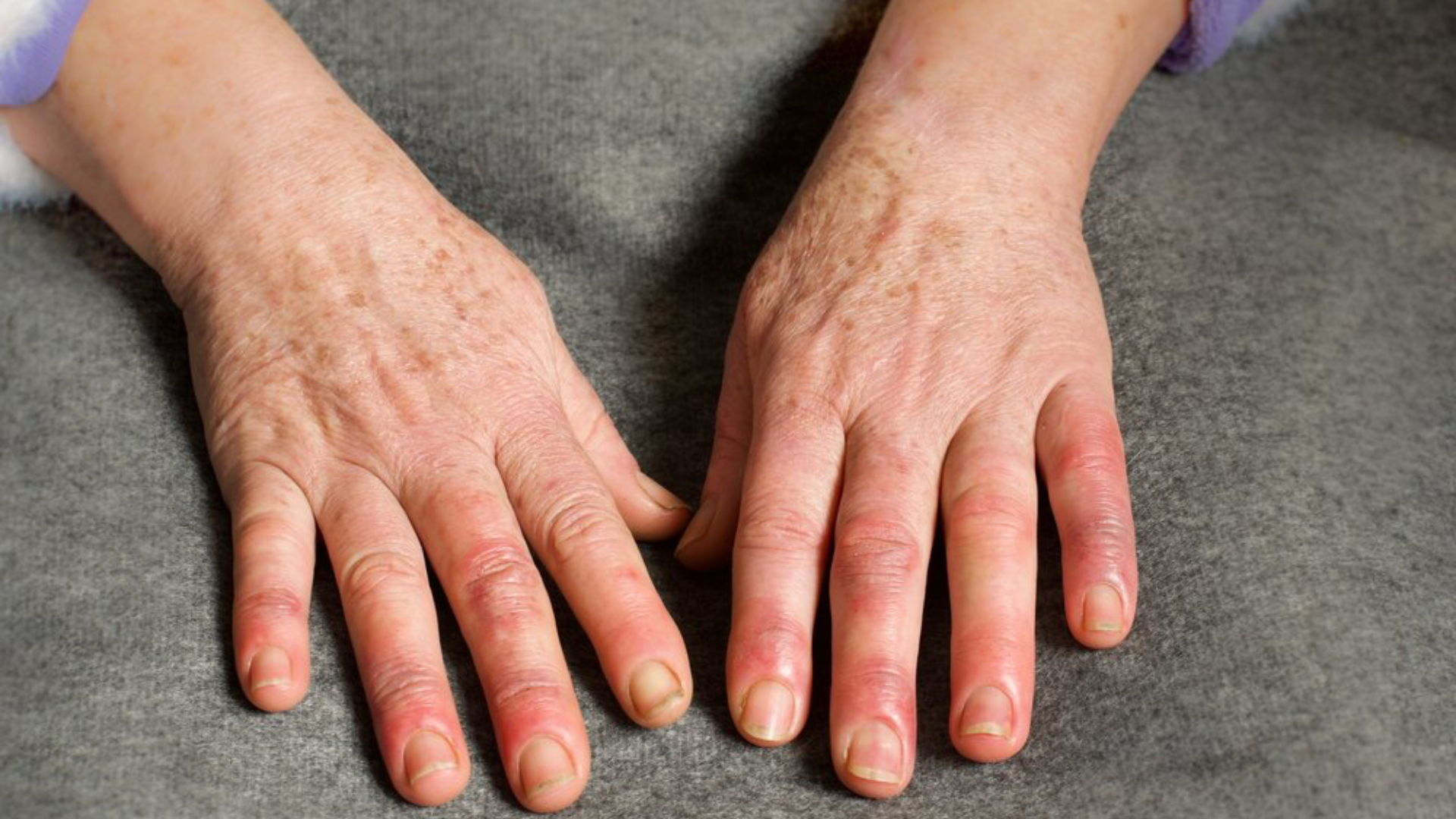Scleroderma is a rare, chronic autoimmune disease characterized by the hardening and thickening of the skin. It may also affect internal organs. The name comes from the Greek words sclero (hard) and derma (skin), reflecting one of the condition’s most typical features.
Although relatively uncommon, scleroderma can significantly impact quality of life, requiring continuous medical monitoring. In this article, we explain its causes, symptoms, forms of presentation, and treatment options.
What Is Scleroderma?
Scleroderma is an autoimmune disease in which the immune system—normally responsible for defending the body against infections—mistakenly attacks healthy tissues, causing abnormal collagen buildup. This excess collagen leads to skin thickening and, in some cases, fibrosis of internal organs such as the lungs, heart, kidneys, and gastrointestinal tract.
The disease presents in two main forms:
Localized scleroderma: affects only the skin and nearby tissues such as muscles and joints. It may appear as:
Morphea (hardened patches)
Linear scleroderma (bands of hardened skin, often on limbs)
Systemic scleroderma: affects both the skin and internal organs and is more severe. It includes:
Limited form (CREST syndrome): slower progression, affecting limited areas of the skin, with potential lung complications
Diffuse form: faster progression, extensive skin involvement, and higher risk of internal organ damage
What Are the Symptoms of Scleroderma?
Symptoms vary depending on the type of the disease and the organs affected. Common signs include:
Thickening and hardening of the skin, especially on the hands, face, and forearms
Raynaud’s phenomenon: fingers and toes turn white, blue, and red in response to cold or stress due to circulation changes
Joint stiffness and muscle pain
Difficulty swallowing (dysphagia) and acid reflux
Swelling of the hands and fingers
Sores or ulcers on fingertips
Excessive fatigue
Pulmonary fibrosis, which can cause shortness of breath and chronic cough
Heart and kidney complications in severe cases
The disease’s progression and severity vary widely: some people experience only mild skin symptoms, while others may have serious systemic involvement.
What Causes Scleroderma?
The exact cause of scleroderma is not fully understood, but it involves a dysregulated autoimmune response leading to excessive collagen production and fibrotic tissue buildup.
Possible contributing factors include:
Genetic predisposition
Environmental triggers such as exposure to silica, organic solvents, or certain medications (rare)
Hormonal and immune system imbalances
Scleroderma is not contagious and not directly hereditary, though first-degree relatives of people with autoimmune diseases may have a slightly increased risk.
How Is Scleroderma Diagnosed?
Diagnosis is clinical, based on a thorough medical assessment of symptoms, but it can be supported by laboratory and imaging tests:
Blood tests: to detect autoantibodies (ANA – antinuclear antibodies, anticentromere antibodies, anti-Scl-70)
Nailfold capillaroscopy: examines the circulation in the small vessels near the fingernails, useful in patients with Raynaud’s phenomenon
Imaging tests: such as chest CT scans, echocardiograms, and gastrointestinal studies to assess internal organ involvement
Skin biopsy: in some cases, to confirm the diagnosis
Is There a Treatment for Scleroderma?
There is no definitive cure for scleroderma yet, but there are effective treatments to control symptoms, slow disease progression, and improve quality of life.
Treatment depends on the severity and type of scleroderma and may include:
Immunosuppressants (e.g., methotrexate, mycophenolate, cyclophosphamide) to control autoimmune activity
Corticosteroids, used cautiously in selected cases
Vasodilators, for Raynaud’s phenomenon and vascular complications
Proton pump inhibitors, for reflux and esophageal problems
Antifibrotic agents, in cases of pulmonary fibrosis
Physical therapy and exercises, to maintain mobility and prevent contractures
Multidisciplinary care, involving a rheumatologist, dermatologist, pulmonologist, gastroenterologist, and physical therapist
In more severe cases, hematopoietic stem cell transplantation is being studied and has shown promising results in specialized centers.
Final Considerations
Scleroderma is a complex condition that can affect everything from the skin to internal organs. Early diagnosis and care from a specialized medical team are crucial to minimizing risks, controlling symptoms, and preserving quality of life.
If you experience skin hardening, Raynaud’s phenomenon, or other suspicious symptoms, consult a rheumatologist. Accurate information and appropriate treatment make all the difference in managing this disease.



